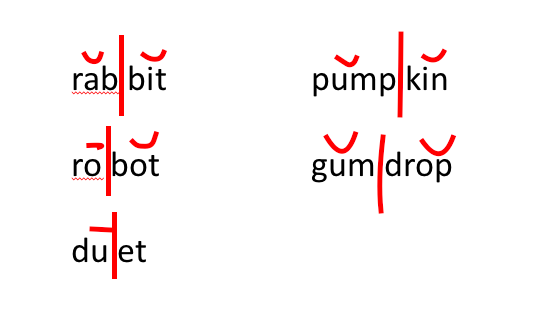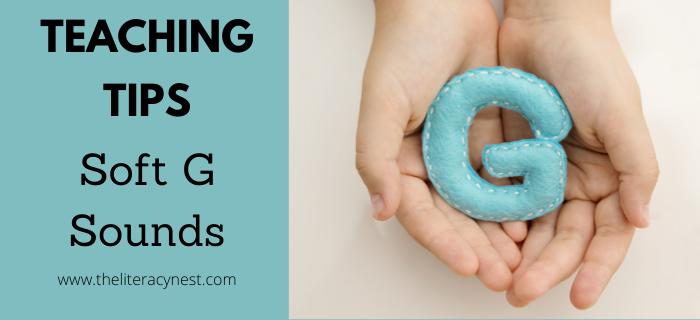Top Tips for Helping Children Distinguish Between Short and Long Vowel Sounds
One question that comes up in discussion among OG colleagues more than just about anything else is about students who are having difficulty distinguishing vowel sounds. Sometimes they struggle with two similar short vowel sounds.

Sometimes they have difficulty distinguishing between short and long vowel sounds. We are always looking to add to our bag of tricks to find the method that will connect the dots for that particular child. Those different ideas often fit into one of the following ideas.
Here are Eight Great Tips for Helping Students Distinguish Between Short and Long Vowel Sounds:
Download and print our Short and Long Vowel Sounds Teaching Tips, here!
1. Add hand motions or movements to distinguish between sounds.
What better way to increase the effectiveness of multisensory instruction than making it MORE multisensory? When the typical multisensory techniques of sorts and tracing are not enough, adding simple hand motions or gestures can solidify the vowel sounds for children who are struggling the most. Taking advantage of muscle memory and the power of kinesthetic learning is not only effective but engaging for students.
2. Use history!
For students who thrive on knowing the whys, the history of English vowels can be helpful and interesting. Up until Middle English, the short and long vowels were literally the same sound with a different duration. Over about 200 years, the long vowels changed their pronunciation to be made higher in the mouth and often further back.
This change, although not overnight. It was dramatic enough to be noticeable and marks the difference between Middle English and Early Modern English. The invention of the printing press and the resulting solidification of spelling were happening at about the same time. This means that while our spelling became frozen in time, the pronunciation was continuing to evolve. Not only does this explain the reasoning behind the names for short and long vowels, but it also explains some of the oddities of English spelling including why some phonograms have multiple pronunciations. Teaching children some of these basic facts about the history of English is incredibly empowering! Your students will know more about the language than their peers and teachers and geek out about language with you.
3. Keep it simple and use keywords.
Many students just need a quick prompt with a keyword from the phonogram deck. By being consistent about the keywords you use with a particular student, the student becomes more able to use that small prompt efficiently and effectively.
Read Fresh Ideas For Phonogram Card drills for lots more ideas.
4. Use sound pictures and a mirror for mouth position.
Taking some time when learning vowel sounds to pay attention to what the mouth is doing can help students who may have difficulty discriminating sounds using only their auditory discrimination skills. These observations may include tongue placement, lip placement, how wide open one’s mouth is, and any role the teeth play in making the sound.
This is particularly useful for very similar-sounding vowels. It can be easier for a student to feel the difference at first or to see the difference in your mouth when you say a sound than it is for them to hear the difference. Using keyword pictures as part of the phonogram deck is valuable for enabling students to engage in strategic auditory discrimination. Pictures are also very useful for conducting sound sorts and reinforcing auditory discrimination skills.

5. Teach closed and open syllables with a house with a door that opens.
The physical act of opening the little door reinforces how the consonant at the end of a closed syllable shortens the vowel sound. Using the door of your tutoring room with the beginning of a word on the doorjamb and the final letter on the door itself is another hands-on way to practice the recognition and reinforce vowel sounds and syllable concepts. For some students, practicing both as a gross and fine motor movement is extremely helpful to memory.
6. Use diacritical marks and code with children.
It is beneficial to have students code at least a few words during each lesson and to code words that cause them difficulty. Marking long vowels with a macron and short vowels with a breve reinforces the student’s ability to recognize and use these marks effectively. Frequent modeling of their use and learning to identify vowel sounds using these symbols is extremely beneficial.

7. Use contrast cards.
Using an array of words with either two short vowel sounds or a short and long vowel sound, have children quickly identify the vowel sound in each word. This activity is not for decoding the entire word, but for increasing a student’s efficiency at recognizing and decoding vowel sounds. The goal is both a high degree of accuracy and fluent responding.
8. Reinforce consistently through questions.
There is a great deal of reinforcement that can happen during the phonogram drill or by asking deliberate questions during the lesson. For example, showing the e-card, “Is this a consonant or a vowel? Which sound is the short sound?” Or for a diphthong such as oi, “Is this vowel team long, short, or something else?” Using diacritical marks is another great time to use reinforcing questions. “Is that vowel long or short? How do we mark a long vowel? Do you know what that mark is called?” One can gradually move from modeling the language of macron and breve or modeling the marking of vowels to prompting for the student to do so.
Looking for tips specific to short I and short E? Read Those Tricky Short I and Short E Sounds: 7 Tips for Helping Your Student Master Short Vowel Sounds!
Vowel discrimination is challenging for many of our students, but becoming proficient and accurate will serve them well as they become more confident and skilled readers and writers.

Play Pick-A-Pattern!
One of my favorite games to play in an Orton Gillingham lesson to practice distinguishing between long and short vowel sounds is called Pick-A-Pattern. If you don’t know how to play, I’ll show you how! Check out the video below.
Want to try Pick-A-Pattern for FREE?! Check out this FREEBIE SAMPLER!
Are you looking for a list of short and long vowel words? Word List Builder has got you covered!
Save time searching for words! Create customized and meaningful review, build your folder of words, create templates and games, and much more in Word List Builder.







